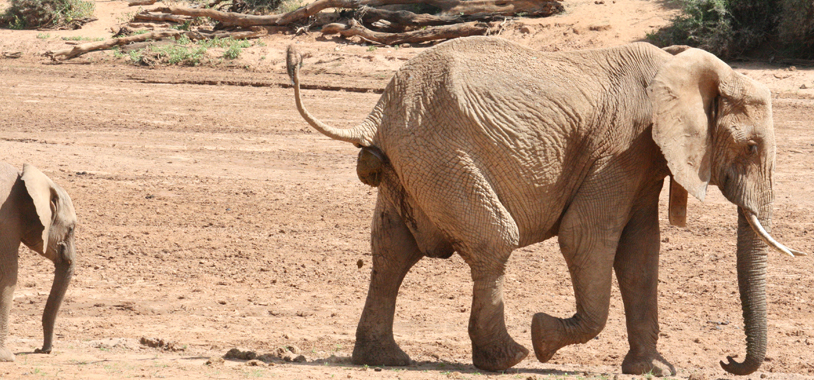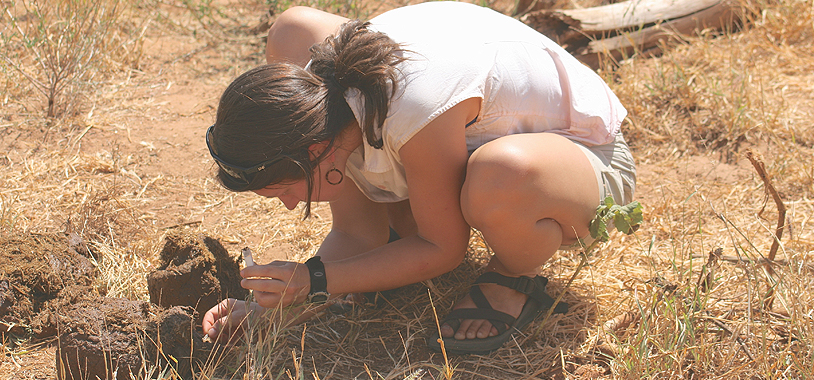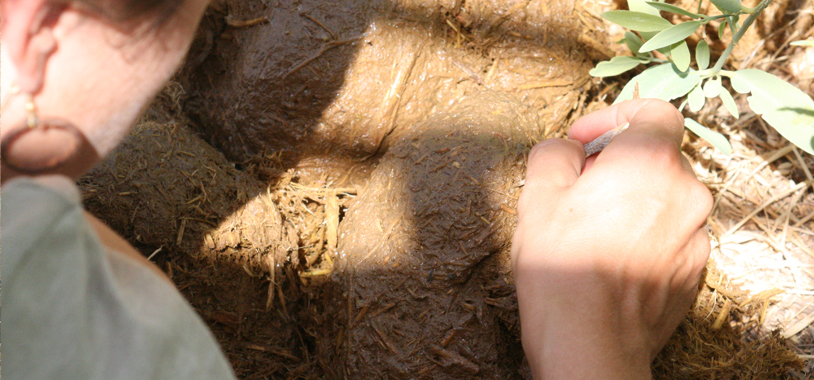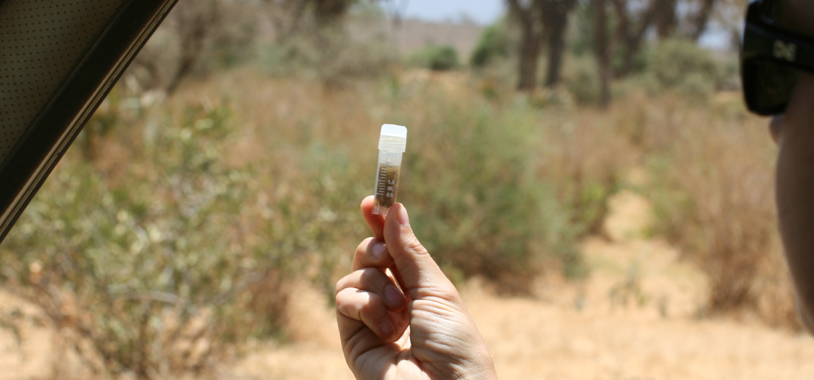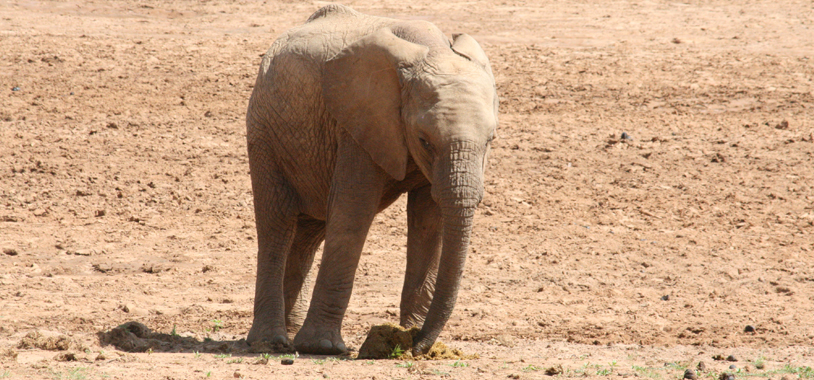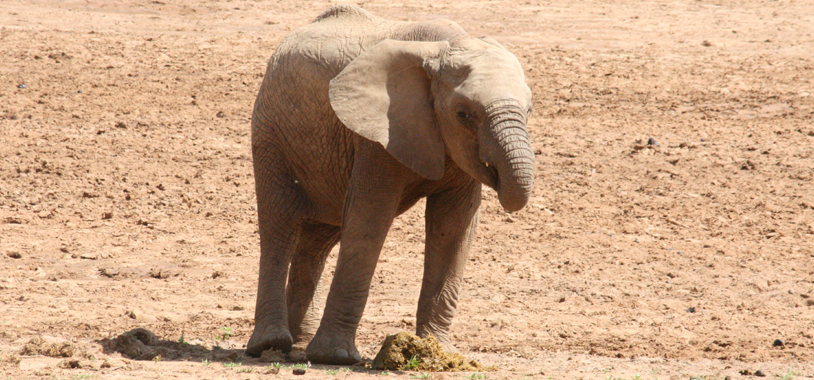“We’ve got a pooper! Poop! Matisse is pooping!”
“Awww yeah! Excellent! Thanks Matisse!”…resounding cheers all around as we drive over to collect our prize.
These days I seldom remember to step back and realize what an odd exchange this is. Clearly I have been hanging out with wildlife biologists for too long. But it’s true, none of us can deny it: we scientists love poop. But why does the sight of a pooping elephant make us so happy?
It turns out that elephant dung contains loads of useful information. For instance, the mucosal lining encasing a fresh bolus holds epithelial cells. These cells in turn contain DNA, which can be analyzed to reveal the genetics of a particular elephant. Genetics tell us how the elephants within a group are related to one another; although this is known for most elephants in our study population from observation alone, older individuals and wandering orphans can be difficult to place. Double checking observations is never a bad idea, either.
Collecting epithelial cells takes some care. But Shifra, Dr. George Wittemyer’s current student who is studying the social consequences of being an orphaned elephant, has it down to a science. If we see someone defecate, and their DNA has not yet been collected, Shifra finds a suitably large thorn from an acacia bush in a sunny area; a thorn that has been baking in the sun can be assumed sterile. After pulling the thorn from its bush, she kneels down and uses it to scrape tiny pieces of mucosal lining from the outer edge of a bolus. (This process makes it look a bit like she is sculpting the dung for an abstract art museum.) The pieces are pushed into a little tube containing ethanol, which acts as a preservative until analysis. It takes about five minutes for Shifra to collect enough mucus, after which time she screws on the cap and labels the tube with whose dung it contains.
What other stories can dung tell us? Well, it is chock-full of hormones, such as progesterone and glucocorticoids. The degree to which progesterone is metabolized in the poop of a female elephant reveals whether or not she is pregnant. Glucocorticoid levels reflect physiological stress, such that an elephant whose poop has greater amounts of glucocorticoids is undergoing more stress than an elephant whose poop has fewer glucocorticoids. I hope to use this latter concept to discover if orphaned individuals have greater levels of stress than non-orphaned individuals. Paired with Shifra’s research, such hormone analysis would allow us to infer both the social and physiological consequences of being a motherless elephant. This could have important conservation implications, because many elephants in our population have been orphaned by poaching.
Unfortunately, collecting dung for hormone analysis is not as straightforward as collecting dung for DNA analysis. Although the actual collection need not be as precise, since hormones are contained throughout the bolus as opposed to only on the edge, hormone levels fluctuate if samples are improperly stored. The only reliable method of storage appears to be via freezing. My challenge will be figuring out how to freeze samples at our camp in the bush, where the electricity can be fickle. Collection of dung for hormones also has to be done more frequently than collection for DNA, which is done only once. Whereas DNA does not change, an individual’s hormone levels fluctuate with time. In order to paint an accurate overall picture, dung for hormonal analysis should be collected from each subject at weekly intervals.
Difficult or not, I will not despair: so long as there is poop, there are answers to be had. Best of all, the information contained within dung can be collected without inconveniencing a study subject. And scientists are not alone in loving poop. For reasons that are unclear to me, we often observe young elephants eating the dung of their family members. Perhaps they are ingesting important gut bacteria present therein, who knows? Whatever the case, scientists and small elephants agree – poop is a beautiful thing!


